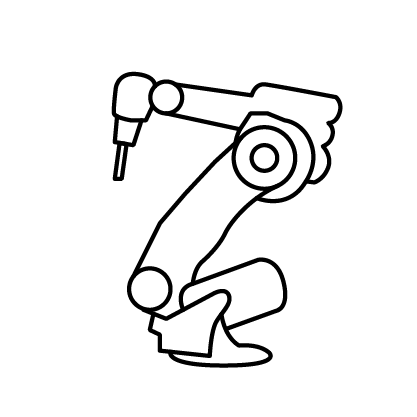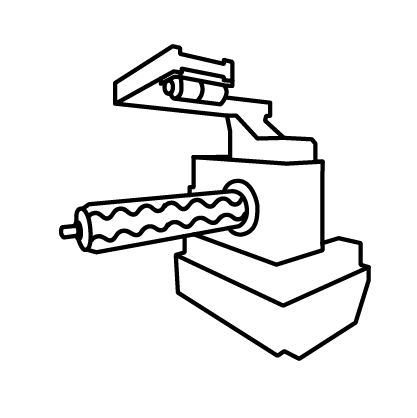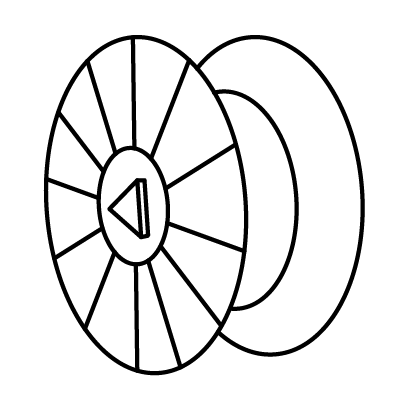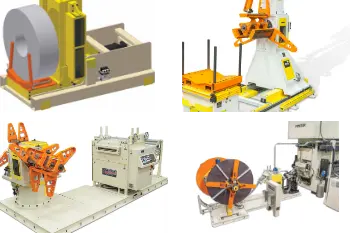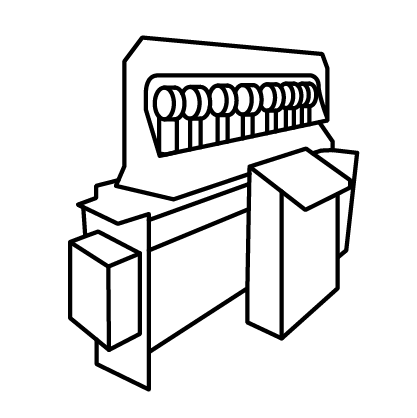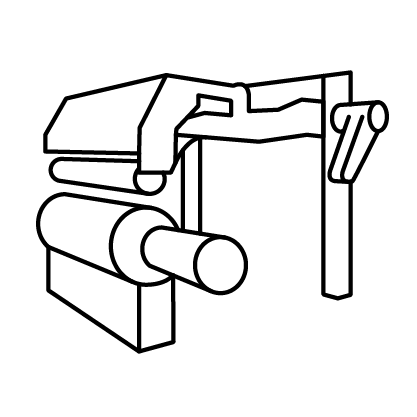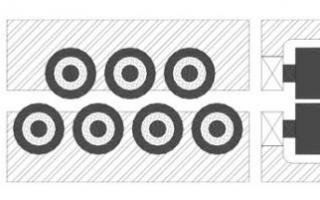
Principles of Shape Correction for flat rolled strip and the equipment it takes to do the job!
Difference between a Flattener, Straightener, and Leveler…
Flattener

Design characteristics
- Work rolls supported by bearings on the ends of the rolls only
- Normally fewer number of rolls (4 to 7)
- Relatively large diameter rolls
- Typically capable of 10-20% of material in yield
Operational characteristics
- Only capable of removing coil set and maybe reduce some cross bow
- Typically used for heavier gauge materials
- When working the material hard, a flattener can actually induce edge wave
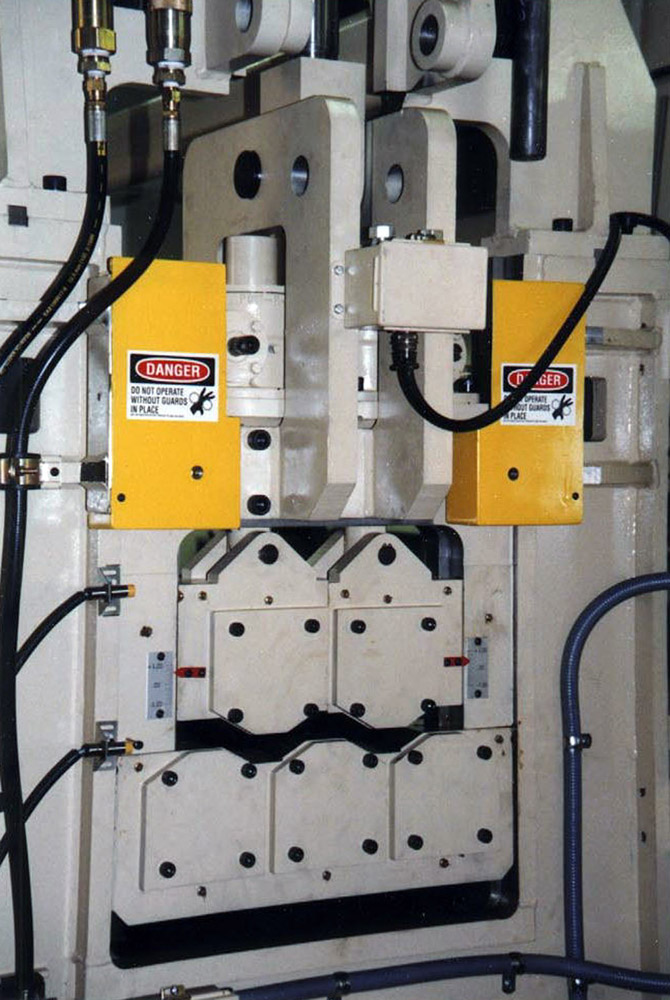
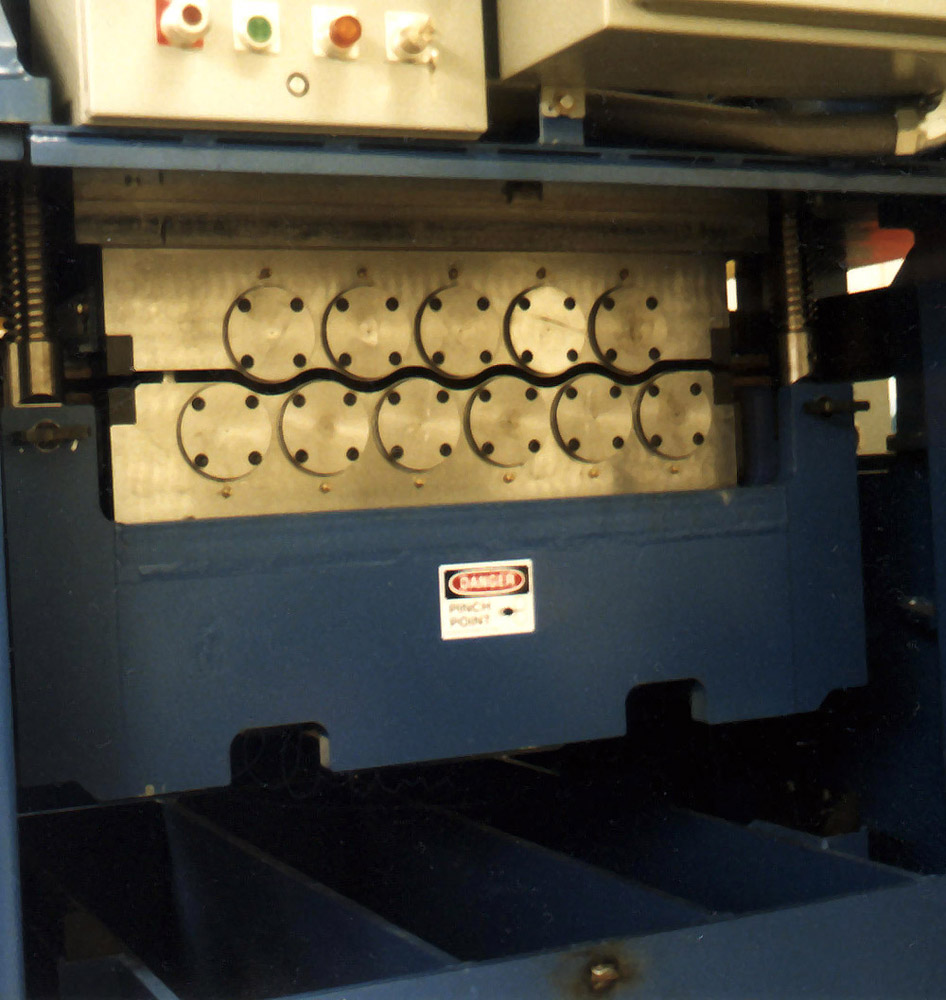
Straightener

Design characteristics
- Work rolls are supported by backup bearings along the full face
- Normally a large number of rolls (10-20+)
- Close roll spacing with smaller diameter rolls
- Typically capable of 50-70% of material in yield
- Normally designed for narrow strip (less than 36”), but can be designed for wider strip
- In general, a much more precision machine than a flattener
Operational characteristics
- Removes coil set and cross bow and maybe some edge wave and center buckle
- Typically used for lighter gauge materials, but can be designed for heavy gauge
- Rolls stay straight no matter how hard you work the material (within the machine design limits)
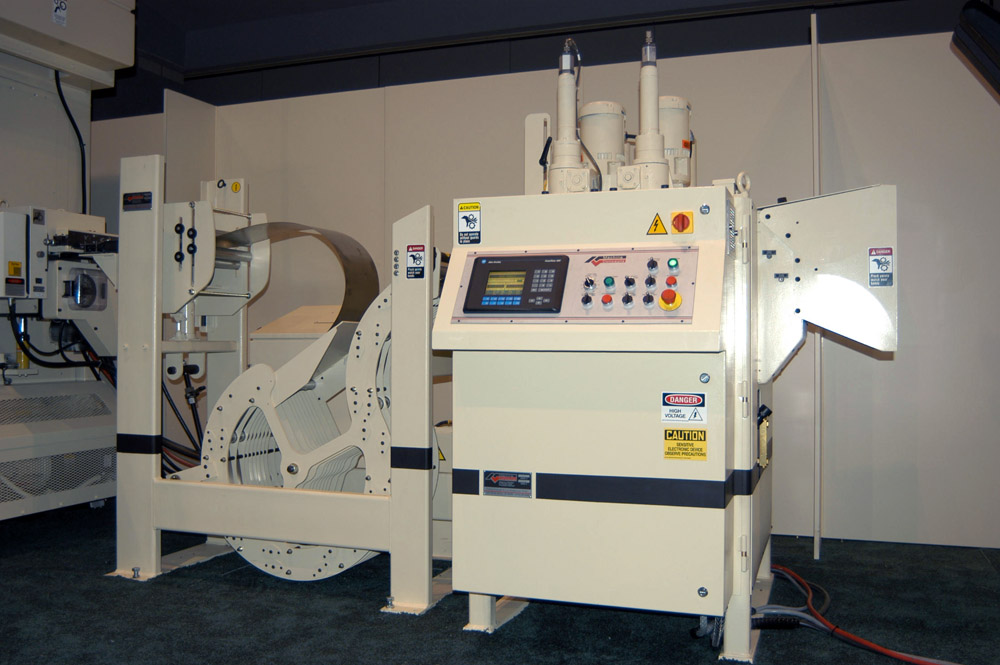
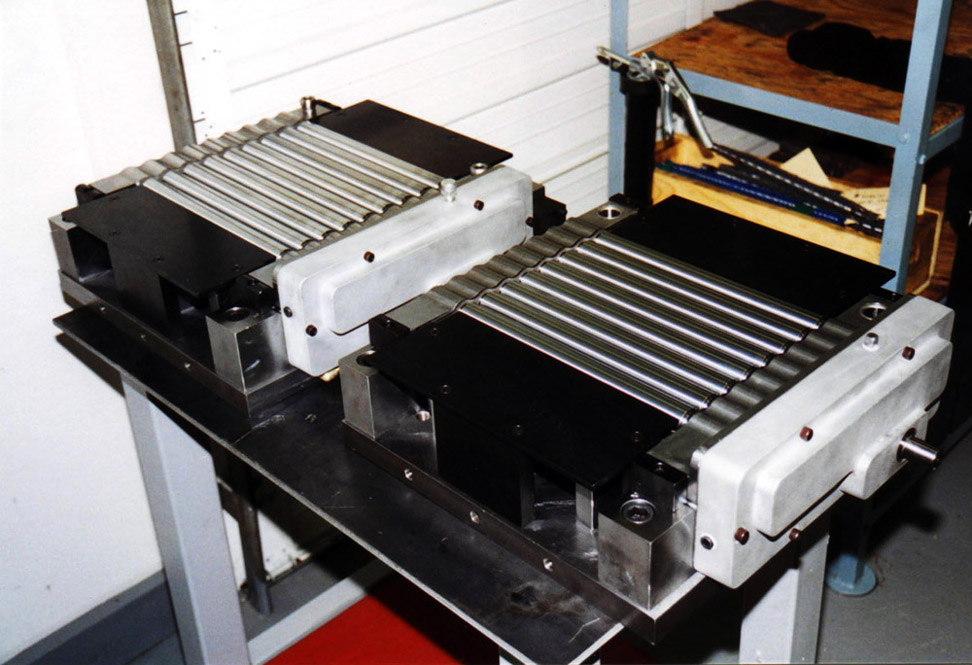
Shape Correction Leveler

Design characteristics
- Work rolls are supported by backup bearings along the full face of the work rolls
- Backup bearing rails, either top or bottom, can be adjusted up and down individually to bow or bend the work rolls
- Normally a larger number of rolls (10-20+)
- Close roll spacing with smaller diameter rolls
- Typically capable of 50-80% of material in yield
- Normally designed for wider strip (greater than 36”)
- In general a much more precision machine
Operational characteristics:
- Removes coil set, cross bow, edge wave, center buckle and combinations
- Machines have been built for all gauge materials, but more common for .015” to .250”
- Requires operator expertise to set up and operate properly
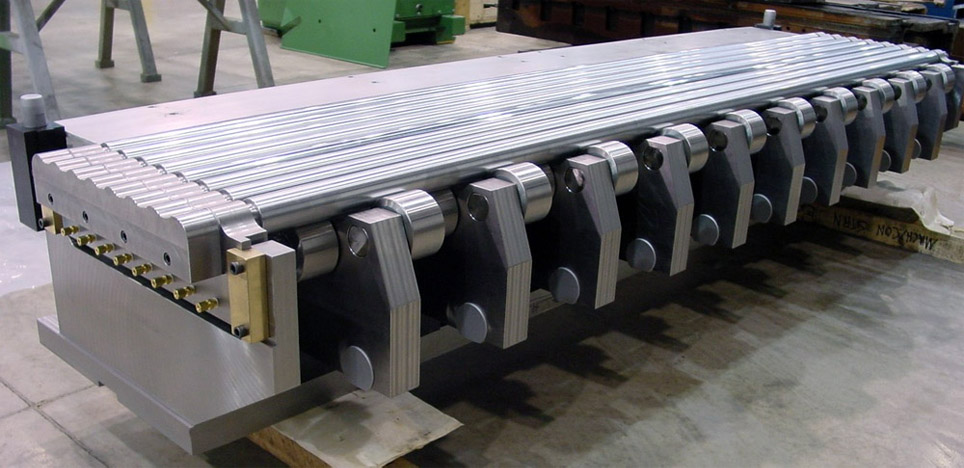
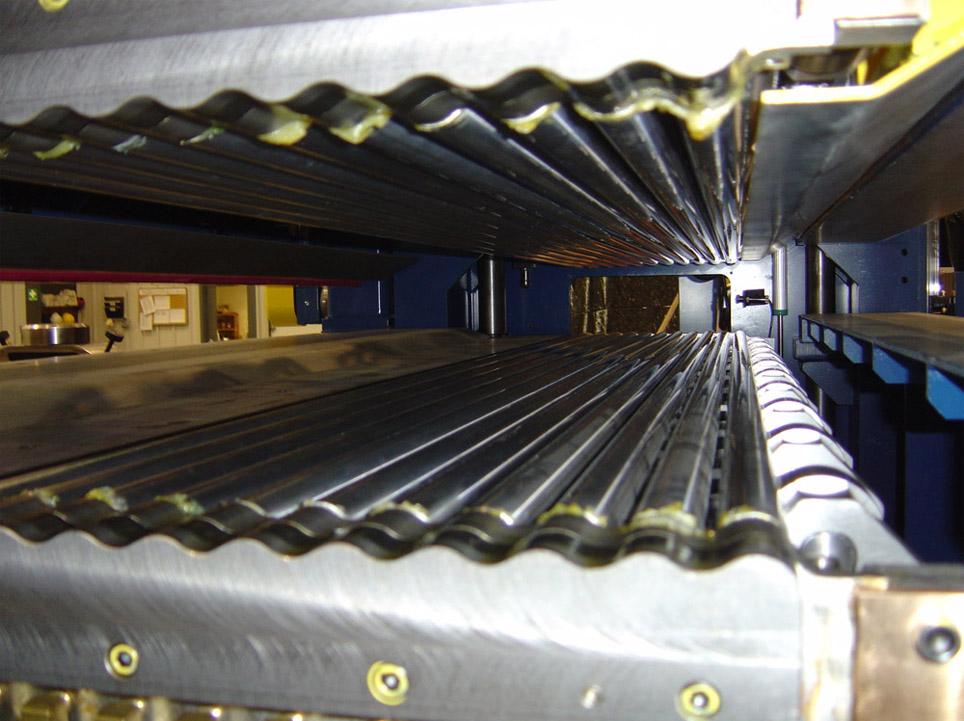
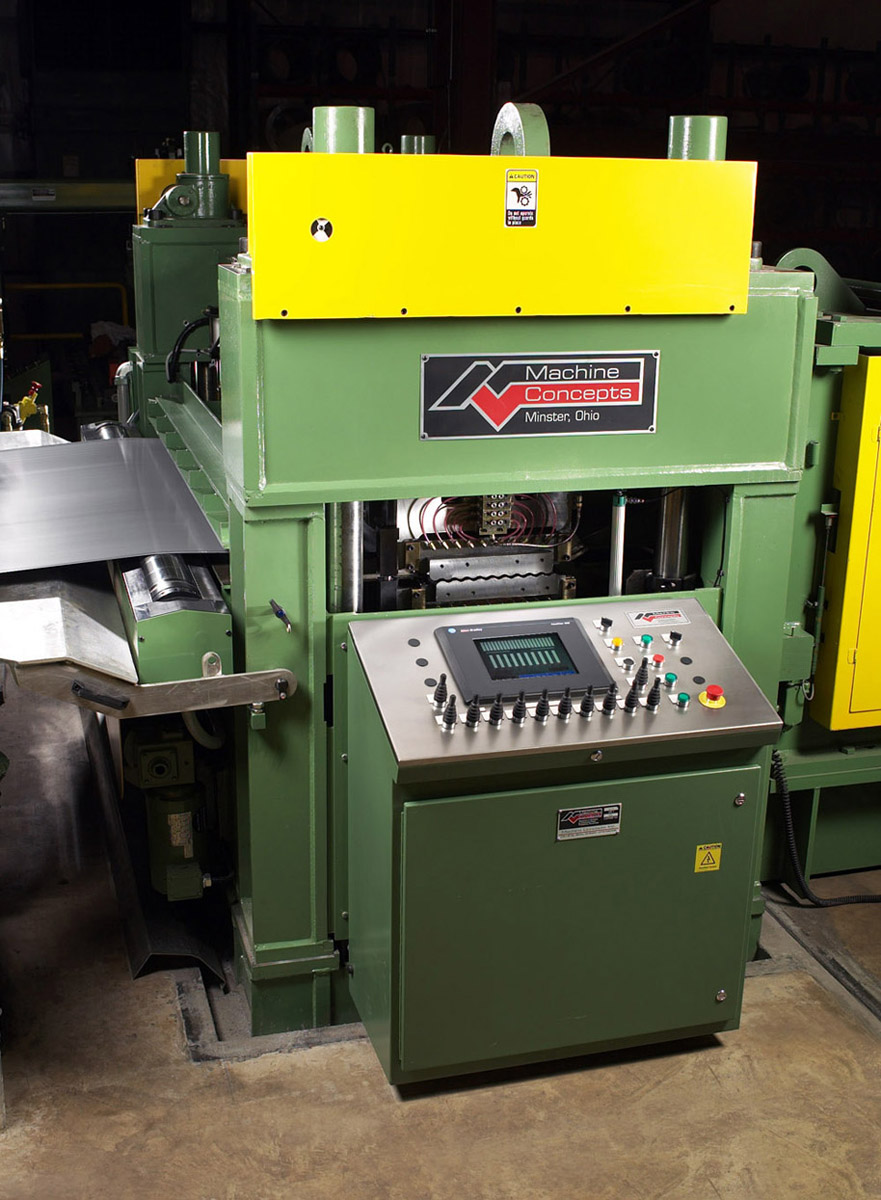
How bending the work rolls can correct strip shape
By bending the work rolls, you can selectively work some zones of the strip (from edge to edge) more than other zones causing elongation. The basic principle is to elongate the short zones to match the length of the long zones.
Elongation occurs due to working the material and differential path length through the leveler.
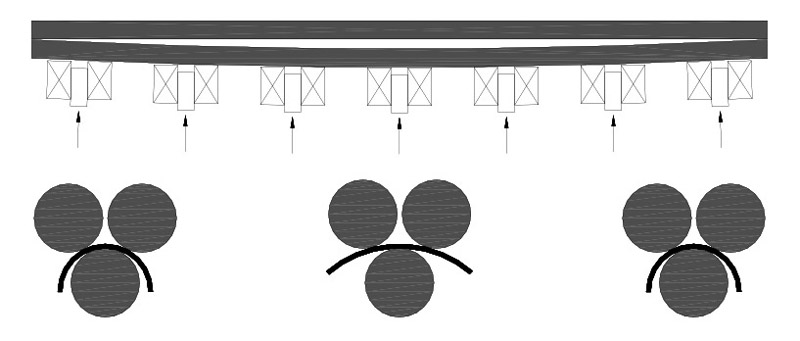
Typical roll bending to eliminate edge wave. The short center is worked harder than the long edges.
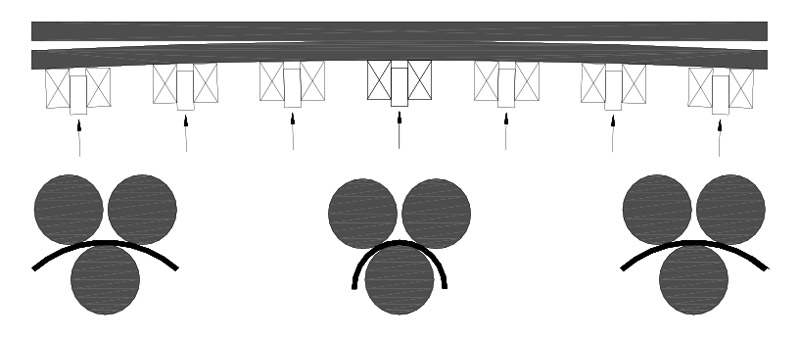
Tension Leveler


